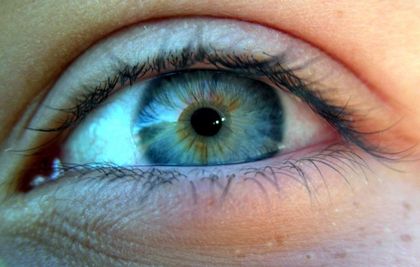The Human Eye
An extraordinary organ
The eye is the organ that allows us to see. Light enters through the cornea and is projected onto the retina, which consists of cells that are sensitive to electromagnetic radiation. From there, the light signals are converted into electrical impulses that are transmitted to the brain along the optic nerve. Once the brain has received the pulses, it transforms the information into an image.
The human eye is spherical and its internal parts are transparent so that the maximum amount of light can reach the retina.
The cornea surrounds and protects the eye. It is made of transparent gel-like material that helps converge light rays onto the retina. The role of the iris is to control the quantity of light that passes through the cornea, keeping it at a fairly constant level. Too much light can damage the retina, whereas not enough will prevent a person from seeing properly.
The iris is nothing more than a ring of coloured muscles, and it is these muscles that give us our eye colour. Its centre, the pupil, allows just the right amount of light to pass through so that we can see. This is why the pupil contracts when there is too much light (like when the Sun blinds us) to prevent excess light rays from reaching the retina, and contracts when there is not enough light (like when we walk into a darkened room) to allow in the most light possible.
Immediately behind the iris is the lens. It is a true lens in that it converges light rays passing through the eye onto the retina. The lens of the eye is also flexible and can deform itself to improve the convergence of light.
The retina consists of two types of cells: cones and rods. Cone cells have a very important role to play because they allow us to see in colour. On the other hand, they are not very sensitive to light rays and need a lot of light to work.
The rods are very sensitive to light and enable us to see when it is dark. They are not, however, capable of distinguishing different colours and details, and this causes the poor colour contrast between objects that we observe when the lighting is dim.
In all, hundreds of millions of cells must work together in our eyes and brain in order for us to see. It is thanks to their highly coordinated efforts that you are able to read these words right now!

